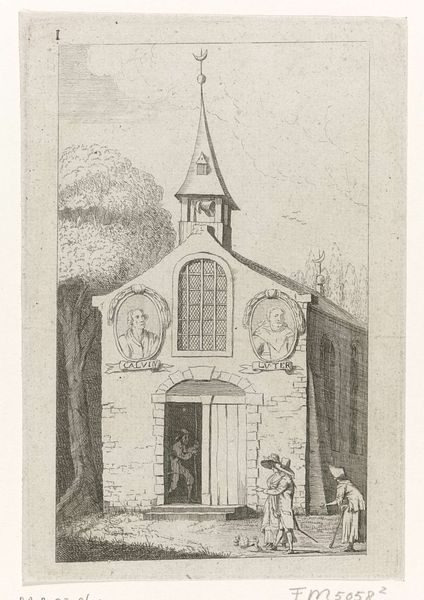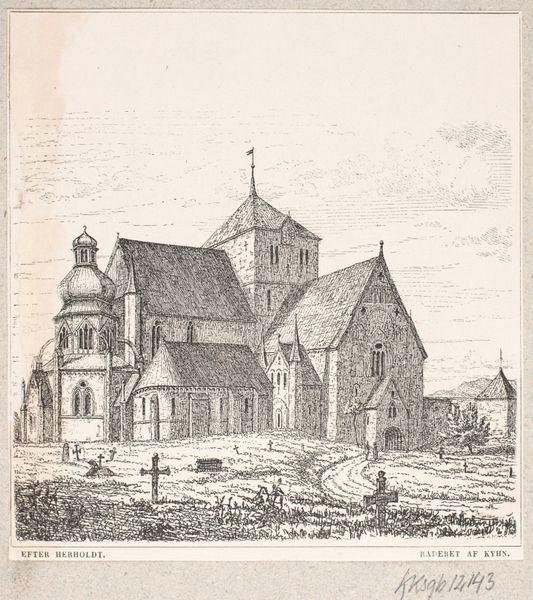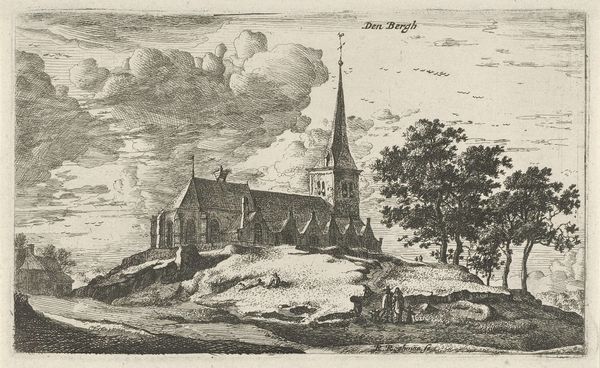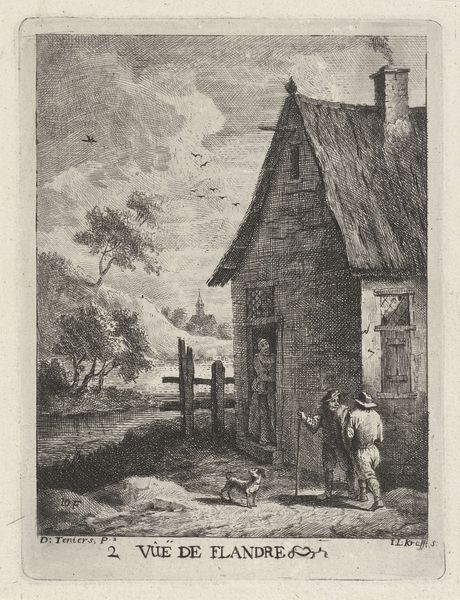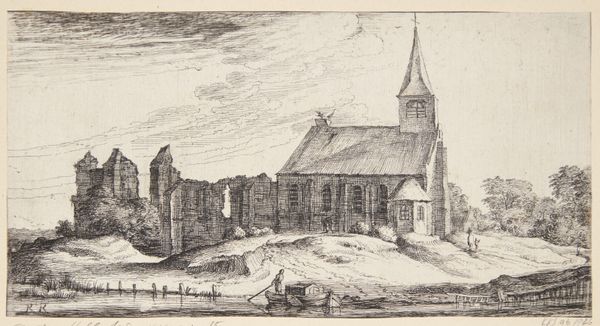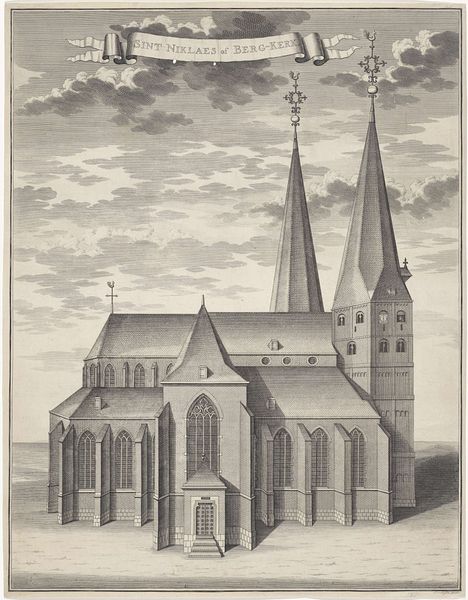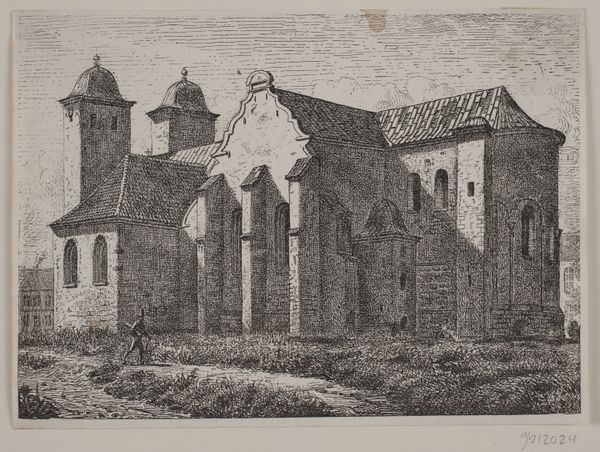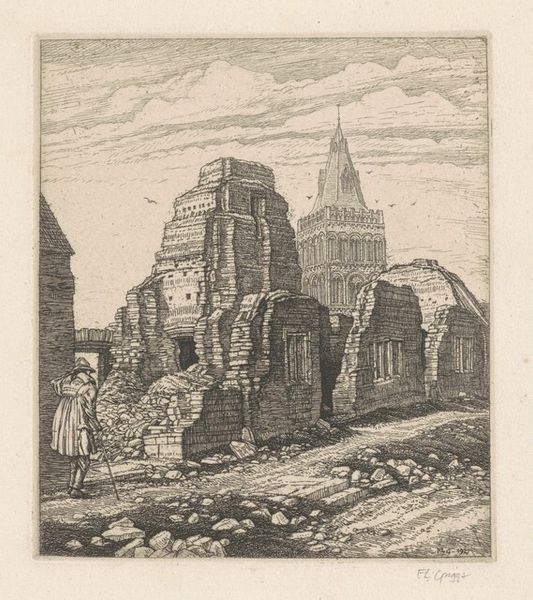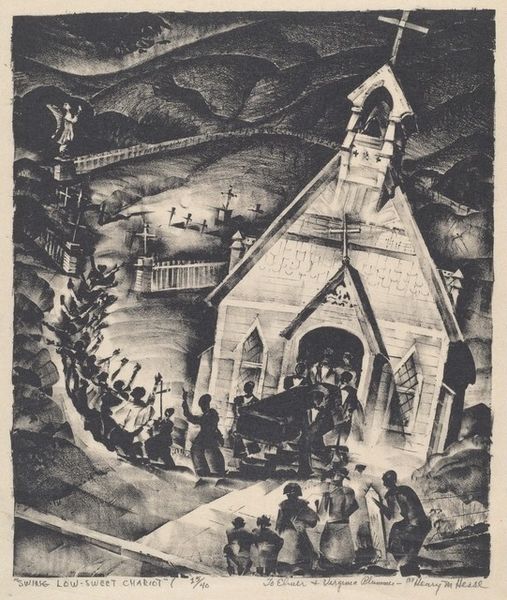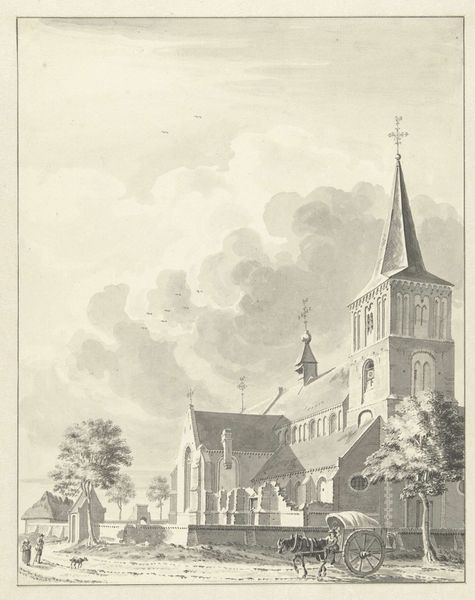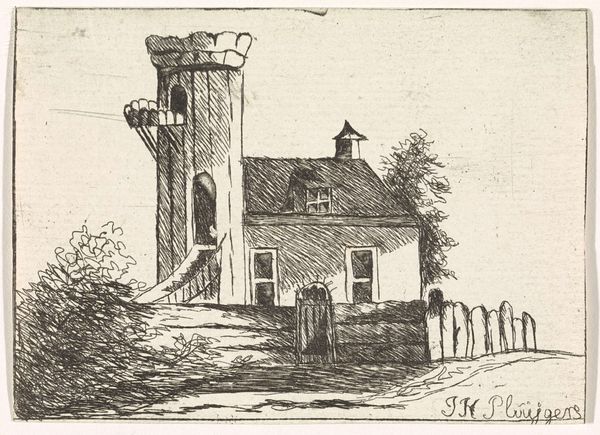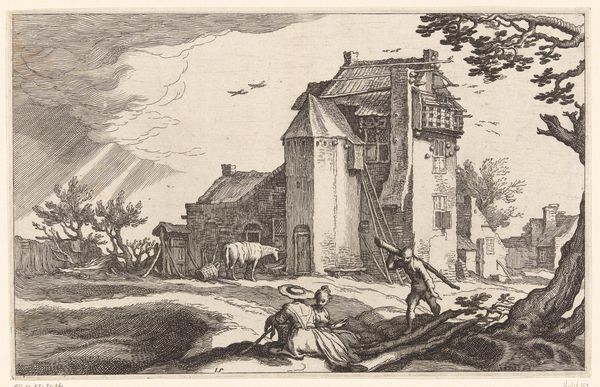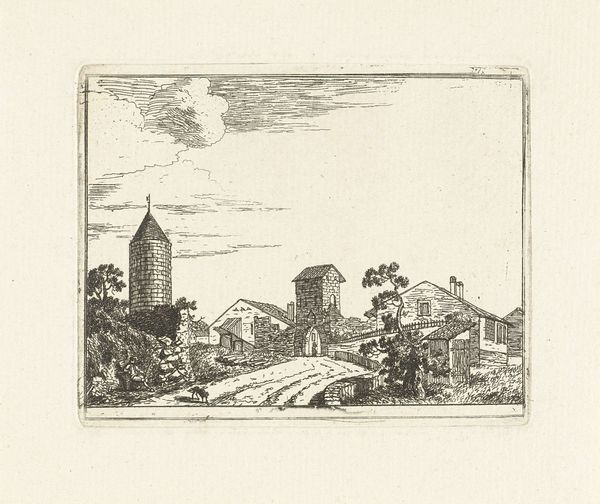
drawing, print, pencil, graphite
#
pencil drawn
#
drawing
# print
#
pencil sketch
#
landscape
#
pencil drawing
#
pen-ink sketch
#
pencil
#
graphite
#
regionalism
Dimensions: image: 32.2 × 23 cm (12 11/16 × 9 1/16 in.) sheet: 43.3 × 27.8 cm (17 1/16 × 10 15/16 in.)
Copyright: National Gallery of Art: CC0 1.0
Curator: Let’s turn our attention to Alfred Wands' "Taos Church," a print dating back to around the 1930s, executed with pencil and graphite. Editor: There’s a stillness to it. A stark simplicity despite the rather dramatic sky, looming with a sense of inevitable downpour. It feels austere, almost foreboding. Curator: Observe how Wands constructs depth with varying densities of graphite strokes. The meticulous detail in the church's architecture contrasts beautifully with the broad, expressive rendering of the landscape. It exemplifies regionalism perfectly, doesn’t it? Editor: More than just regionalism, I see a quiet commentary on cultural resilience. The church, seemingly stoic amidst the looming weather, speaks to the enduring spiritual significance it holds within the Taos community, particularly for the Native and Hispano populations. Note the figures near the steps – perhaps illustrating communal strength. Curator: An interesting reading! Focusing on the formal elements, one could argue the dominance of vertical lines - the steeple, the facade, the figures - creating a hierarchical structure. This emphasizes the church as the focal point. The limited palette reinforces this sense of austerity. Editor: True, but that very austerity highlights the complexities of intercultural relationships in the region. We're dealing with architecture imposed by colonization existing alongside indigenous presences. Are they entering, are they leaving? The unanswered question suggests more than aesthetic pleasure. It touches upon themes of cultural negotiation, the syncretism between imposed structures and sustained traditions. Curator: And yet, the print is itself an artifact from the WPA era and an important visual and historic source. Without knowledge of pencil, composition and the technique deployed, can any narrative be construed beyond projection? Editor: The power lies, perhaps, in the productive tension between formal language and sociocultural context. One cannot be separated from the other; indeed, the most evocative artworks spark ongoing conversations of historical importance. Curator: Indeed. Food for thought. Editor: Always. It opens another lens to look through.
Comments
No comments
Be the first to comment and join the conversation on the ultimate creative platform.
